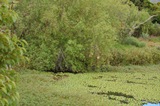Weaver species
Choose different species from drop-down list and press 'Go' button. See Full species list.Usambara Weaver Ploceus nicolli
IUCN: Endangered Discovery: 110Categories: nuthatch, IUCN,
News items about species
Discovery
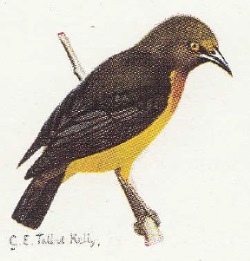
figure from Mackworth 1955a 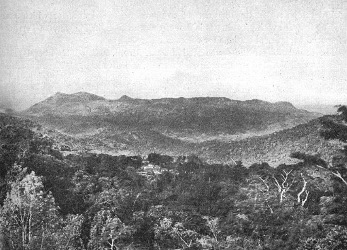
figure from paper 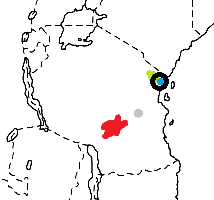
distribution, type locality circled IntroductionThe Usambara Weaver was formally described by William Lutley Sclater, a British zoologist and museum director.The Usambara Weaver was collected by Reginald Ernest Moreau, an English civil servant and African ornithologist. In 1928 Moreau moved to the East African Agricultural Research Station, Amani, where he at first worked in the accounts department. Mr. Moreau wrote on 22 June 1931: "We have just got a Weaver here which beats me completely. The bird was the male of a pair that looked alike, and it was obtained just outside my office, i.e., at the edge of the forest. We have seen the bird perhaps hail a dozen times in the three years we have been here, and have always been puzzled by it." Later Moreau wrote that he had asked his African collector to keep a look-out for this weaver. The collector saw the bird one evening in the immediate vicinity of the laboratories and he pursued it through the plantations in the twilight, eventually obtaining the male type specimen. In September and October 1931 an immature male and female were obtained in Cedrela-trees in a clearing about five miles north of Amani, confirming that this was a new species, and not an Olive-headed Weaver. Before moving to Tanzania, Moreau had lived in Egypt where he had met Michael John Nicoll who was the director at the Giza Zoological Gardens. Nicoll had provided much help and encouragement in the study of ornithology to Moreau. When Moreau sent the Usambara Weaver type to the British Museum, he asked that this bird be named after the late Mr. Michael John Nicoll, to whom he was indebted. The Usambara Weaver was first illustrated by Mackworth 1955a, and then not again until the advent of modern bird field guides. Scientific citationPloceus (Symplectes) nicolli Sclater 1931a, Bull. Brit. Orn. Cl. 52 p.26, Amani, East Usambara Mts., NE. Tanganyika.Meaning of namesnicolli, Named after Michael John Nicoll (fl. 1924) who helped Reginald Moreau during his long residence in Egypt.First English nameNicoll's Weaver (Sclater 1933a).Alternate namesNicoll's Weaver.CollectorReginald Ernest Moreau's collector.Date collected19 June 1931.Locality collectedAmani, East Usambara Mts., Tanzania.Type specimensThe types are in the British Museum of Natural History (BM 1931.5.7.6). |
The above is based on Weaver Wednesday 2, a weekly series about the discovery of each weaver species.
This species text first appeared as
Weaver Wednesday [227] - Discovery [110]: Usambara Weaver on 2016-10-19
1. Basic biology
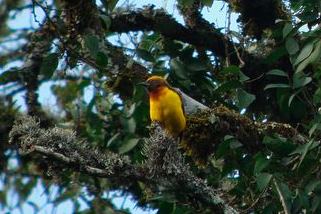
figure from Nik Borrow 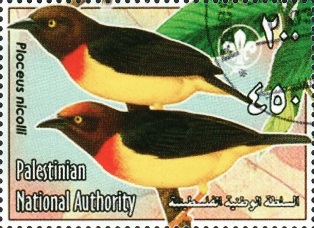
figure - stamp from Palestine 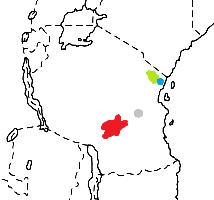
Distribution. The Usambara Weaver occurs at low densities in montane forests in the Eastern Arc Mountains of Tanzania, where it appears to have a very small and greatly fragmented population (see map left, based on Birds of Africa). Map colours:
No races are recognised, although birds in the south have sometimes been recognized as a separate race based on minor plumage differences. It is considered rare, since forest is highly fragmented and is being progressively cleared for agriculture, timber and plantations. Its global population is currently estimated to be less than 2500 individuals, and declining. Habitat. The Usambara Weaver inhabits the canopy of montane evergreen forests. It occasionally occurs at forest edge, in disturbed forest, plantations and in isolated trees in cultivated areas. The Usambara Weaver occurs singly, in pairs, or in mixed-species flocks, often with the Dark-backed Weaver. Food. The Usambara Weaver feeds on insects. It often hangs upside-down from branches while foraging, to glean insects from trees covered in epiphytes. It also probes bark and lichen for hidden food. Breeding. The Usambara Weaver is probably monogamous. The nest resembles that of the Dark-backed Weaver, being constructed from dry tendrils and creepers, but it has a shorter entrance tunnel with a flared opening. Nothing else is known of the breeding of this species. |
The above is based on Weaver Wednesday, a weekly series about weaver species.
This species text first appeared as
Weaver Wednesday [103]: Usambara Weaver on 2014-06-04
2. Breeding facts
| Pair bond no information Breeding season no information Nest site no information Nest building Nest resembles that of P. bicolor (made from dry tendrils and creepers), with shorter entrance tunnel and more flared opening. No other information Colony size no information Clutch size no information Egg colour no information Egg size no information Incubation no information Chicks and nestling period no information |
Breeding information based on Handbook of the Birds of the World, Vol. 15.
3. Photos of Weaver Nests
 Vm 11297 |
Thumb-nails of most recent PHOWN records - click on one to see its full record
See all PHOWN records for this species here.
PHOWN (Photos of Weaver Nests) provides valuable info on breeding distribution and colony sizes of weavers.
You can contribute by registering and submitting photos at Virtual Museum webpage.
4. Breeding distribution
Google map showing distribution (For species with small ranges you need to zoom in at the correct area to see the range):
yellow blob - range of weaver species; read more about this here.
![]() - PHOWN records with photos
- PHOWN records with photos
![]() - PHOWN records with no photos (Nest Record Cards, other records)
- PHOWN records with no photos (Nest Record Cards, other records)
![]() - Birdpix records
- Birdpix records
![]() - comments on out of range records, or interesting records
- comments on out of range records, or interesting records
![]() - type locality
- type locality
CLICK on the marker on the map to see individual record details.
5. Range changes
Not South African speciesThe above is based on Weaver Wednesday 3, a weekly series about range changes in South African weaver species.
This species text first appeared as
n/a








